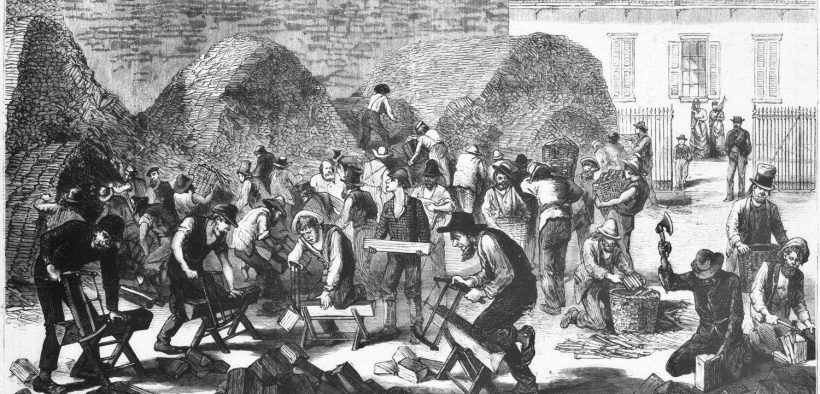Homelessness

By Laurie Block, DHM Director
The overall US homeless population has fallen almost 14% since 2010, though some 550,000 people go to sleep without a guaranteed bed, warmth if needed, or a roof to keep dry. These HUD numbers are developed by counting at a specific time annually those living in shelters, transitional housing, on the street, in cars, or squatting in places not typically used as homes. It is likely that there are more homeless in need than HUD’s count,
Homelessness has been the focus of public and private energy in the US since the mid 19th c. It is most evident in urban environments, but that doesn’t mean that rural residents haven’t experienced it. Different eras have developed varied approaches, and it is one social-problem arena that reveals the consequences of addressing a problem by seeking its underlying cause, or by focussing on meeting its most immediate perils, including the growth of “public dependency”.
In 2018, one state, Massachusetts, has a law that guarantees homeless children a “right to shelter”. Significant effort has been made in MA to help families with children find sustainable living situations and the state’s homeless population has been declining. But some of that punitive fear of public dependency is still evident in the policy: A family must have spent at least one night in “a place not fit for human habitation” before being eligible for services.
Our FB image today depicts just one of several late 19th c. Boston homeless shelters. The Wayfarer’s Lodge on Hawkins St. offered “vagrants” and “tramps”, a bath, food, and lodging. The criteria for a stay included proving one’s need had arisen from “proper causes,” and there was a work requirement. If the homeless person’s need arose from some activity associated with drinking or perceived vice, they could instead be punished and imprisoned. In this engraving, the able-bodied homeless are portrayed sawing wood to make charcoal. It was a less onerous task than the common 19th c. work requirement of picking oakum, which involved separating loose fibers of old rope from the pitch. The fibers were sold as caulking. The Wayfarer’s Lodge was for men. Women and children were sent to the City Temporary Home nearby on Chardon St. But getting the care offered there also required women – and sometimes the children – to work.
Image: Aug. 29, 1879: Frank Leslie’s Illustrated News, Dozens of men saw wood in front of a series of charcoal ovens in the middle of an urban block in Boston. The location is Hawkins and Chardon St., near Government Center today.


FOLLOW US ON SOCIAL MEDIA